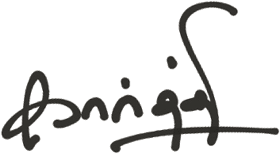There are many books out there about writing but there are only very few books about writing for designers. Scott Kubie's book is one of them. If you are a designer, then don't miss reading this gem.
The book gave me a lot of structure to my thinking and writing as a designer. I highly recommend this book to all my designer friends but specifically to my content strategy and UX writer friends. Personally, I found writing accidentally in my design career. I found it when titles like UX writer, Content strategist, creative writer, Interface design specialist etc did not exist but I did all the above. Wish I found writing incidentally and learnt the subject systematically.
This book gives you a structured process to handle content writing for designers. Cherish it and above all use it.
Here are my synthesized 10 big ideas from the book. If you don't have time to read the entire book, tune in your next 8.2 mins and get the most out of the book here. The next best thing to do it is to read the book yourself (it takes 2.5 hours).
Playing the piano well requires more than just a technical skill. Pressing the right keys at the right moment requires a lot of practice and habits to internalize those technical skills. Writing is no different. It is not about merely assembling the right words the right way. We also need to know how to practice writing and cultivate good writing habits. Writing is a process. It has equal parts of instinct and procedure, and you must know how to navigate both. This book helps you with a recipe, tools, techniques and approach to each step in the writing process.
Writing is a part of the design process. Words are one of the most powerful design materials. They convey deeply complex meanings in a compact space. They are easy to share and edit. Words are 95% of the interface anyway (Scott didn't say this but I do). Look deeply, words are everywhere in design. They are there in Interface copy, product copy and marketing copy. They are there even when there are no words like:
CTA/Button Text
Error Messages (EWAHS as I call it - Errors Warning Advisements Help Strings)
in-app help text
release notes in app store
help and support documentation
confirmation screens
splash screens
transactions
icon text
more
Good writers make writing look easy but writing as a process is hard even for writers. Knowing that it is a difficult journey, you can plan well. Accept the hardship so that you can make it look easy for your users and get shit done. Whatever you write, it is personal because the words will carry you. It is a vulnerable process. Writer's journey is lonely, and people around make it hard because they don't know what a writer needs and hence, they don't know what information to provide or how much time to give the writer. They try and make it sound easy and worse they say things like: "you are a creative so this must be easy and shoot me something before lunch". Argggggg.
Scott gives a workflow to writing with 4 distinct phases in it.
Prepare (to write)
Compose (the words)
Edit (what you wrote)
Finish (the damn writing)
Plan your workflow well. Choose the tools, techniques, people and processes that will help you weave all the four phases. Scott provides a structure worksheet to plan the writing workflow (no, i am not giving it here. buy the book and get it). Planning need not be elaborate. It can be quick, sketchy and to the point. The point is, think about how you will get the writing done, before you start writing.
There is more to writing than writing itself. Do the prep work for every assignment thoughtfully and intentionally. You might feel an urge to rush past this phase but don't. More planned you are, faster the writing process is. A little planning upfront goes a long way.
articulate the assignment (deadline/roles/context/requirements/scope)
collect inputs (SOW, wireframes, task flows, meeting notes, workshops etc)
generate ideas (mind mapping, freewriting, brainstorming etc)
create structure (outlines, templates, inventories & to-do lists)
make space to write (calendaring, digital space, physical space)
Write quickly and write everything. You'll never get writing done, if you are waiting for perfect words in perfect places. Clear writing comes from clear thinking. Start with a rough-in. Just grab all words and put it together. Instead of Label | Label | Label| Label, do a rough-in Home | User details | Promo details | settings | options. The faster you move away from lorem ipsum, the sooner you will get writing done. From blank page, you go to re-writing a lot faster and that is a win.
Use a scratchpad (separate the thing and not the thing, physically or digitally)
Reduce friction (turn off all irritants, be lazy, look for faster, automated ways)
Write one thing at a time
ACB (accuracy, clarity and brevity)
keep writing. don't stop.
Editing is all about substantially improving the writing with an intent. This is not tweaking or proofreading). Editing can also be dangerous. You may lose a chunk or lose track of changes or feedback.
Track your changes and keep all your versions.
Hack your taxonomy and name your files sensibly.
Maintain changelogs
Turn on automatic version control
Get the editing done. Have an intent to your editing process. It is a lens that will anchor you in the process. If you don't have your why, then you will wander a lot with words. Avoid that.
Make writing focused
Make it simple (structure, language and concept)
Make it readable
Make it consistent
Make it impactful (strength, tone, urgency, scale and emotion)
Listen to what you wrote, get feedback and lock-in.
Finish your writing, get approvals, polish it and send-in.
Your organization structure and culture will determine your approval process. It can be hard and messy as busy stakeholders will never have time to slow down and read. So present and sell your work.
Anticipate stakeholder questions and prepare answers. Send the answers even before they ask for them. Sometimes you need to get attention by calling for a meeting, get people in the room and walking through stuff.
Prepare your shit umbrella upfront. Get your stakeholder buy-and keep them closer to your writing. They typically don't shit on things they are a part of.
Someone will try and shift the goal post after the writing is done. Your preparation phase saves you and helps you navigate these conversations.
Scope creep is common. Prepare and plan for it from the beginning so that you don't have to play defence at last without anyone to support you.
There is a distinction between rough work and finished worked. We have seen it for plumbing, carpentry, electrical, painting etc). Finish your work before you move to the next assignment. Leave the place clean.
Add links
Add Metadata (sometimes write them)
Proof it (spellings, typo, homonyms, jargons, acronyms etc)
Send the package to stakeholders
Tidy up physical and digital spaces
Reflect and document your learnings.
Send updates and thank you note to everyone involved.
Get that to-do list done and call it an assignment.
Being a designer is hard and I feel your pain. Writing as a designer is even harder as writing itself is hard. It is not magic but with good planning, great writing happens. You can write too. It is just thinking and typing together, and anyone can do it. If I inspired you to read this long, I hope you are inspired to write too.
🥂 to writing, especially if you are a designer!

